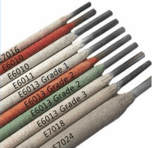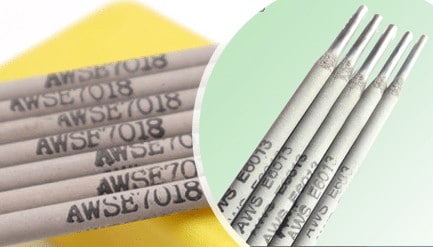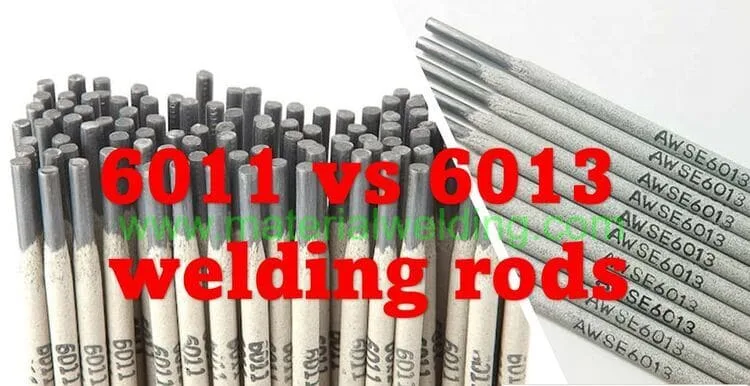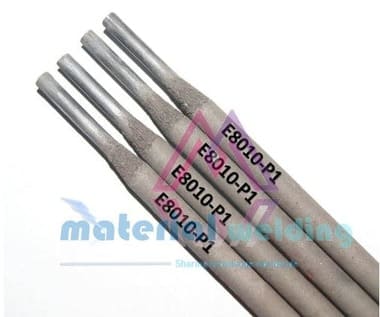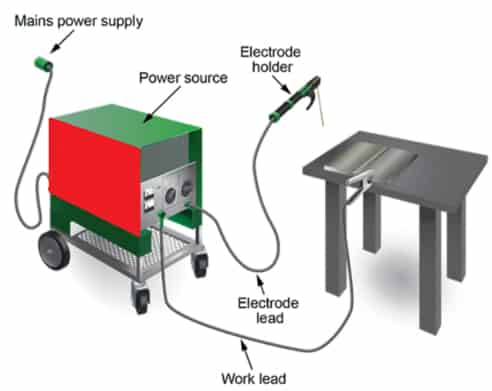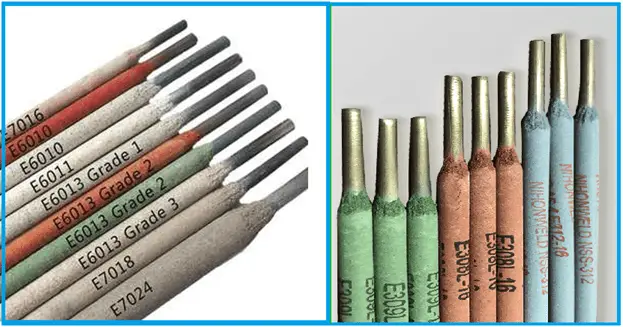E6010 Welding Rod
E6010 Welding Rod is a high cellulose covering stick welding electrode used for pipeline welding. Due to the cellulose (organic material like paper, with high hydrogen in form of moisture), the burning of E6010 Welding Rod coating does not produces any slag and resulting in less weld cleaning.
E6010 Welding Rod gives a spray arc with high arc force that gives deep welding penetration, making E6010 an ideal stick welding rod for root run welding, especially in pipelines.
E6010 Welding Rod uses
E6010 Welding Rod is having a tensile strength of 60 Ksi & Yield strength of 48 Ksi, that makes it a mild steel Stick welding rod. The most important uses of E6010 Welding rods are:
- Welding of pipeline root run: E6010 gives deep penetration for open root welds in piping joints. This make E6010 a first choice for pipeline welding.
- Good for overhead welding: E6010 has no slag and weld pool is fast freezing characteristics. This makes E6010 welding rod ideal for welding in overhead welding position.
- Welding on rusty & dirty surface: Welding with E6010 on rusty and dirty surface is ideal choice compared to other electrodes. Reason- E6010 welding rod gives deeper penetration and thus ensure good fusion in such conditions.
- Weld with no Slag: As mentioned earlier, due to cellulose coating, there is no slag involved with E6010 Welding rods. so cleaning is must easier and faster compared to E6013 or E7018, for example. This make is best welding rod for open root run welding.
- Out of Position Welding: E6010 due to no slag is one of the best stick welding rod for welding in out-of-position welding.
Related Reading: E6010 Stick Welding Rod: Everything about it explained.
E6010 Welding Rod Amperage
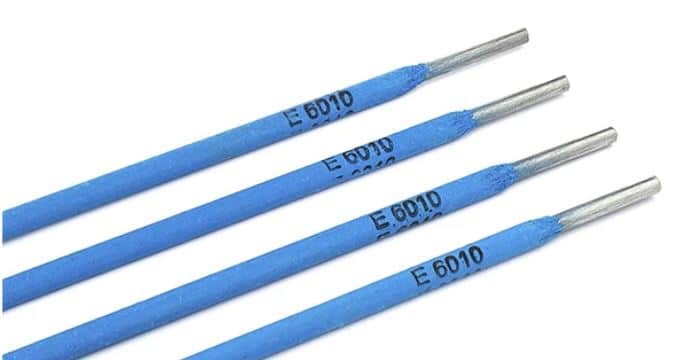
E6010 Welding rod amperage depends on the welding rod diameter. A 3/32 inch rod can be run with 40 to 70 amperage, 1/8 inch on 70-125 amperage, 5/32 inch rod on 90 to 170 amperage.
Welding amperage selection chart for E6010 is given below for reference:
| Welding Rod Diameter | Welding Amperage (Current) |
| 3/32-inch (2.5 mm) | 40- 70 |
| 1/8-inch (3.2 mm) | 70- 125 |
| 5/32-inch (4 mm) | 90- 170 |
| 3/16-inch (5 mm) | 140- 220 |
E6010 Welding Rod SDS
An E6010 Welding rod SDS covers the:
- Hazard Identification.
- Product information.
- Composition of E6010 rod.
- First aid measure.
- Fire-fighting measures.
- Storage & handling.
- Chemically & physical properties.
- Additional information.
Click here to download a reference E6010 Welding rod SDS.
What are the elements in E6010 Welding Rod Covering?
E6010 stick welding rod is made of iron core wire with added other elements. Such main elements in an E6010 Welding Rod are:
- Sodium silicate: For arc stability.
- Titanium dioxide: For arc stability & Characteristics.
- Cellulose pulp: For deep penetration & production of welding shielding gases.
- Quartz: For arc characteristics.
- Magnesium oxide: Deoxidizer.
- Calcium carbonate: production of welding shielding gases.
- Iron, Manganese & Silicon: Present in mild steel core wire.
E6010 Welding Rod Specification
E6010 Welding Rod specification is AWS A5.1. The Number E6010 is the Classification for this welding rod.
E6010 Welding Rod Polarity
E6010 Welding Rod can only be used with DCEP polarity or Reverse Polarity. DCEP means Direct Current Electrode Position.
Related Reading: Types of Polarity in Welding.
E6010 Welding Rod Positions
E6010 is an all Welding position stick welding rod. E6010 welding rod can be used in Flat, Horizontal, vertical and overhead welding positions.
Does E6010 Requires Baking or Holding before use?
E6010 Welding rod shall be used without baking. Due to the high amount of moisture required for the E6010 rod, baking or reconditioning will adversely affect its usability characteristics and break the coating.
Why E6010 has poor arc stability with AC?
Sodium is having low arc stabilizing power due to its smaller atom. Thus it holds its outer cell electrons tighter making them difficult to lose.
As we know in AC welding, the current alternate from position to negative and reaches zero during their alternation.
Now due to restricted electron movements with Sodium present in E6010 coating, an arc will distinguish during this phase when the current reaches zero.
Thus making very poor arc stability and arc maintainability when using an E6010 Welding rod. In DCEP as there is no current alternation, and it is always in the position zone, DCEP suits best for E6010 welding rod.

